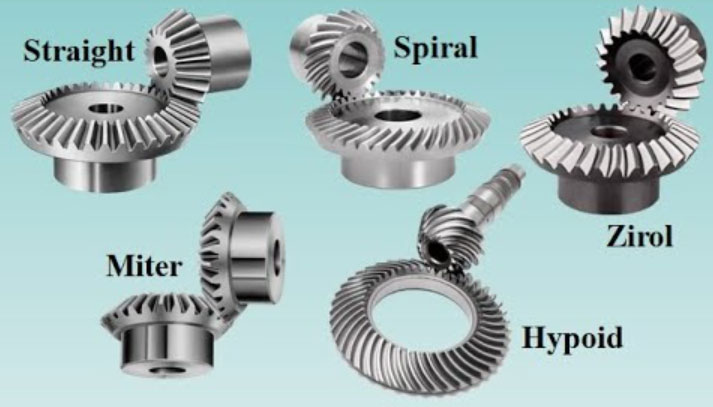Noise reduction in bevel gears is a crucial aspect to improve their performance and ensure a quieter and more comfortable operation. Several advancements in noise reduction techniques have been developed to minimize gear noise. Here are some notable advancements in this field:

- Tooth Profile Optimization: Optimizing the tooth profile of bevel gears can significantly reduce noise. Advanced design techniques, such as tooth modifications and optimization algorithms, are employed to achieve smoother tooth engagement and reduce meshing impacts. These optimizations aim to distribute the load more evenly across the tooth flank, minimizing vibration and noise generation.
- Surface Treatments and Coatings: Applying surface treatments and coatings to the gear teeth can reduce friction, wear, and noise. Techniques like surface polishing, superfinishing, and surface coatings, such as diamond-like carbon (DLC) or low-friction coatings, can improve the gear’s surface finish, reducing frictional losses and noise during meshing.
- Lubrication Optimization: Optimizing the lubrication system and using advanced lubricants can significantly contribute to noise reduction. Proper lubrication ensures a smooth and efficient gear meshing process by reducing friction, wear, and heat generation. Lubricants with improved viscosity, additives, and anti-friction properties help minimize gear noise.
- Damping Techniques: Damping techniques are employed to absorb vibrations and reduce noise transmission. One such technique is the use of viscoelastic materials in gear housing or gear supports. These materials dampen vibrations by converting mechanical energy into heat, effectively reducing gear noise.
- Tooth Contact Analysis and Simulation: Advanced computer simulations and finite element analysis (FEA) techniques allow for a detailed study of tooth contact patterns and load distribution. By accurately analyzing the tooth contact, engineers can optimize gear geometry, tooth profiles, and contact ratios to achieve better load sharing, reduced impact, and subsequently lower gear noise.
- Precision Manufacturing: High-precision manufacturing processes are critical for noise reduction in bevel gears. Advanced machining techniques, such as gear grinding, honing, or skiving, produce precise tooth profiles and reduce tooth errors. Strict manufacturing tolerances and quality control ensure minimal deviations in gear geometry, resulting in quieter gear operation.
- Smart Monitoring and Control: The integration of smart monitoring and control systems can help detect and mitigate gear noise in real-time. By incorporating sensors to measure vibration, temperature, and acoustics, the system can identify abnormal noise levels and trigger appropriate corrective actions. This may involve adjusting gear meshing parameters, lubrication flow rates, or other operational parameters to minimize noise.
- Material Selection and Gear Design: The choice of materials with good damping properties and specific gear design considerations can contribute to noise reduction. Materials with high strength, toughness, and good vibration damping characteristics, such as specific alloy steels or composite materials, can help minimize noise generation. Optimal gear design, including gear ratio selection, helix angles, and tooth modifications, can also play a significant role in reducing noise.
The advancements mentioned above, combined with ongoing research and development efforts, continue to drive improvements in bevel gear noise reduction. It is worth noting that noise reduction techniques may vary depending on the specific application requirements and industry. Collaborations between gear manufacturers, material specialists, and researchers are essential for developing and implementing these advancements to ensure quieter and more efficient bevel gears in various applications.
